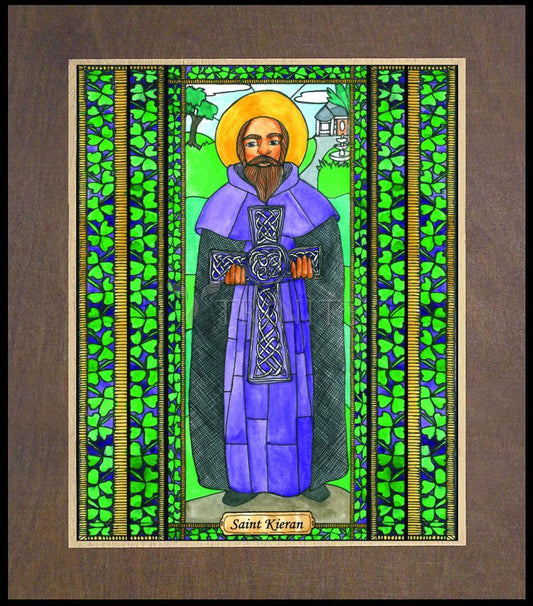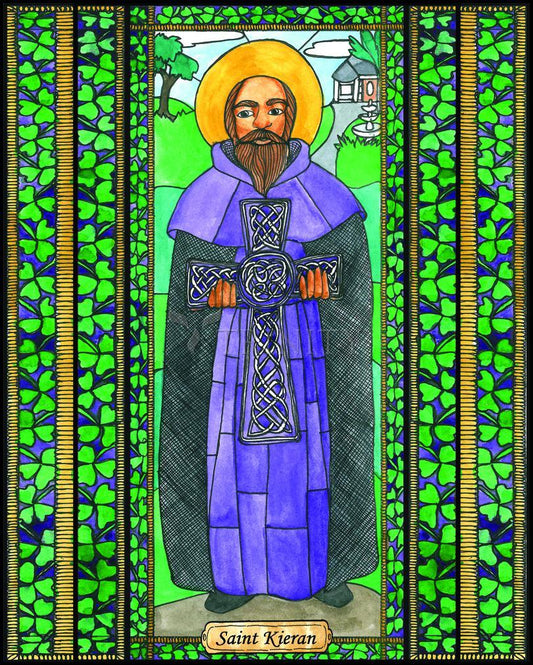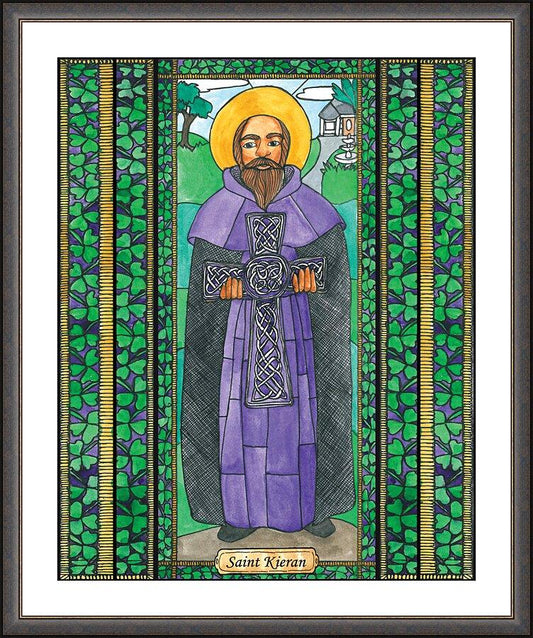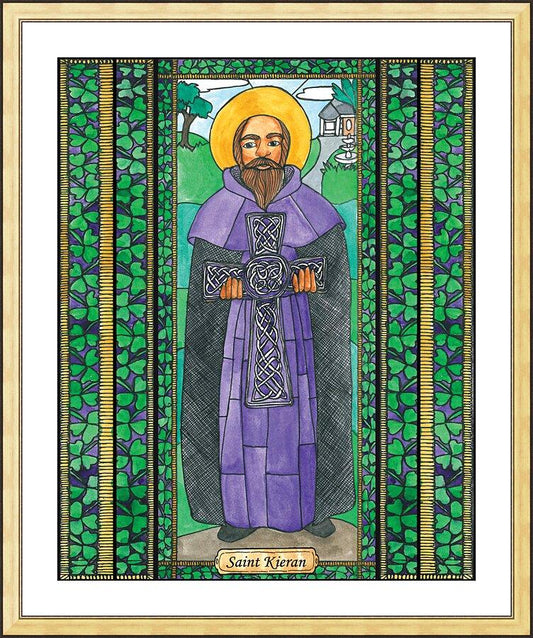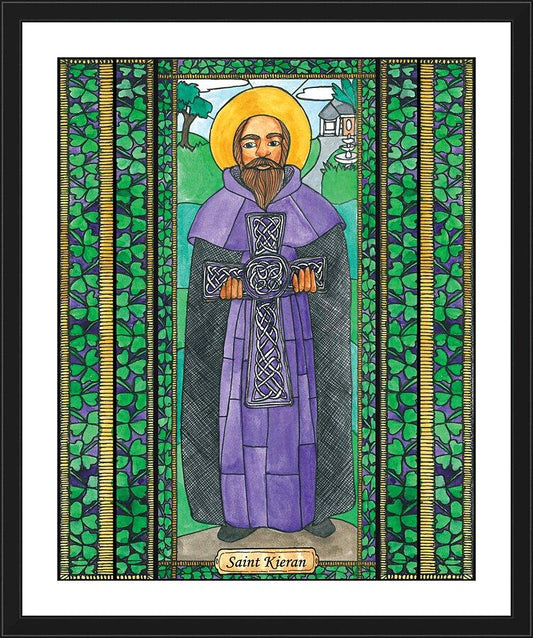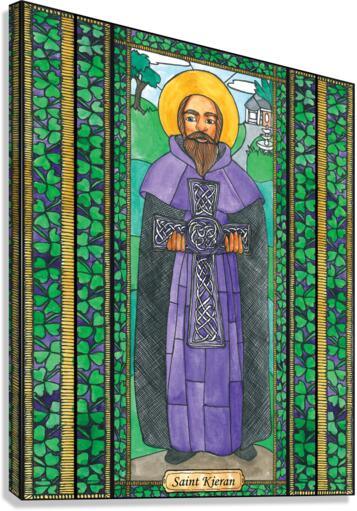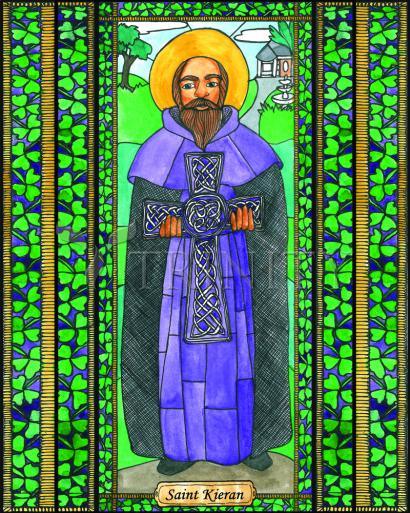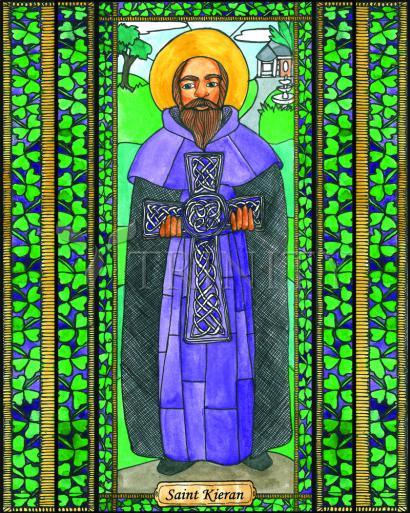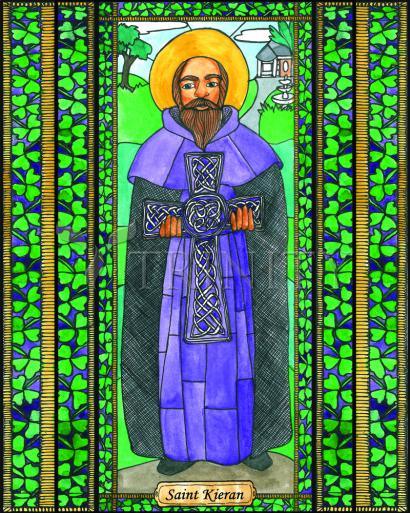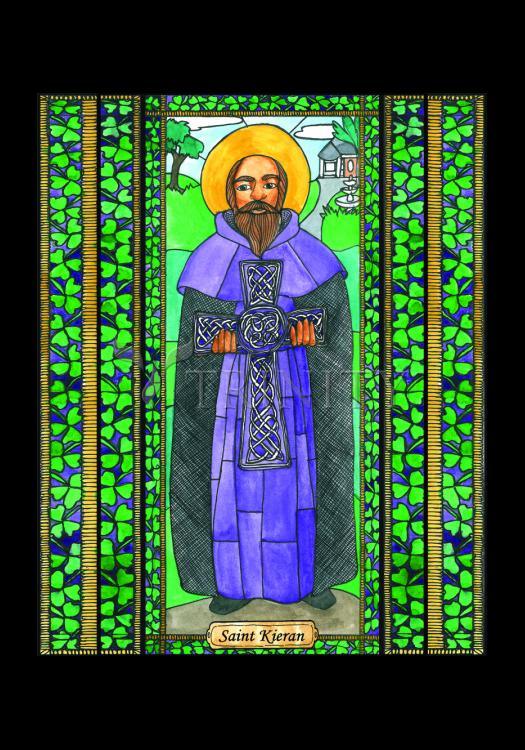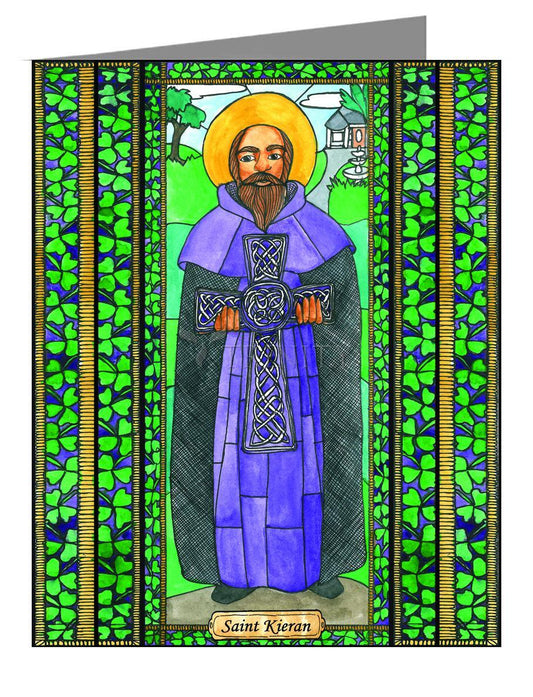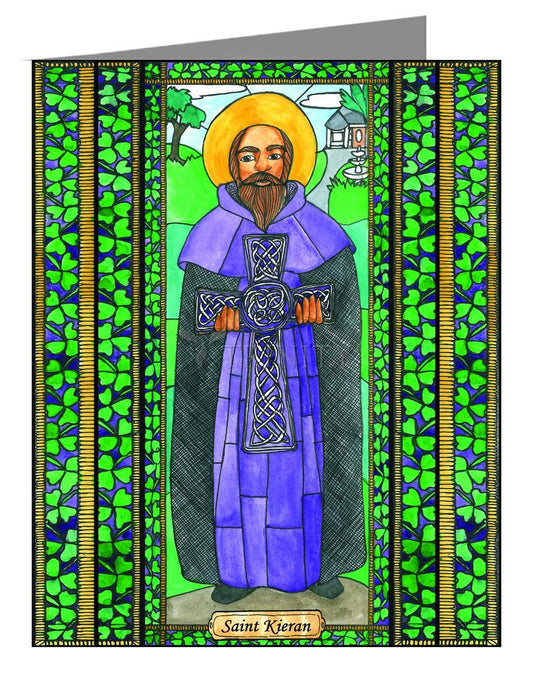5th century. St. Ciaran or Kieran, the Elder is believed to have been a contemporary of St. Patrick if not a precursor of this great saint. He was born at Cape Clear, where there is a church reputedly built by him, but he went to the Continent for his education and was ordained and consecrated bishop there before returning to Ireland. He settled as a hermit at Saighir near to the Slieve Bloom Mountains but soon disciples were attracted to him and a large monastery grew up round his cell, which became the chosen burial place for the Kings of Ossory. His mother Liaden is said to have gone to Saighir with a group of women who devoted their lives to the service of God and the members of her son's community.
There are many stories of miracles wrought by God through Ciaran, including several restorations to life of those who had died, and there are charming tales of his relations with the animal kingdom. One of these related how the most blessed bishop and first begotten of the Saints of Ireland "as a youth saw a hawk swooping down and snatching a fledgling from its nest. Ciaran, moved with pity for the little creature, prayed for its deliverance and the hawk flew down and laid it at his feet, torn and bleeding, but at once it was wonderfully restored to health and strength. There are considerable remains at Saighir among them the carved base of a high cross and St. Ciaran is regarded as the Patron of Munster with the fifth of March as his feast day.
This St. Kieran is commemorated in all dioceses of Ireland, for he is reputed to have been the "firstborn" of Irish saints.
Kieran's biography is full of obscurities. It is commonly said, however, that he left Ireland efore the arrival of St. Patrick. Already a Christian, and of royal Ulster blood, he had determined to study for the Church; hence, he secured an education at Tours and Rome. On his return from France, he built himself a little cell in the woods of Upper Ossory.
There he spent the next few years as a hermit. Inevitably, however, other devout men joined him to form a monastery called "Saigher" (that is, "Sier-Ciaran," - "Kieran's Seat"). Later, he built nearby a monastery for women, the care of which he entrusted to his mother Liadan. Thus Kieran, rather than Brigid, seems to have been the pioneer founder of Irish women's convents. Around these foundations arose a village called Saigher, after the monastery.
When St. Patrick arrived in Ireland to carry the Faith throughout Erin, Abbot Kieran gave him his glad assistance. Some writers say that Kieran was then already a bishop, having been ordained while on the continent. It seems more likely, however, that he was one of the twelve men that Patrick, on his arrival, consecrated as helpers. It was customary in the early days for abbots to be ordained as bishops but to remain heads of their monasteries. The Diocese of Ossory considers Abbot Kieran as its first bishop. (He may also be the St. "Piran" venerated in Cornwall, Wales and Brittany).
Many legends inevitably arose, too charming to leave untold, about this ancient hermit and bishop.
One story involves the Christmas communion of St. Cuach, Abbess of a monastery far away from Saigher. She had been Kieran's nurse when he was a child, and as a priest he always celebrated Mass for her community on Christmas night, after having presided at the midnight Mass of his own abbey. But nobody could figure out how he got to the convent of Ross-Bennchuir, so many miles distant, and returned that same night. The chronicler of the story suggests that it was by a miracle like that in which God once lifted up the prophet Habakkuk by the hair of his head and sped him from Palestine to Chaldea.
A second tale was that of Chrichidh, the boy from Clonmacnois whom St. Kieran had admitted to his monastery as a servant. One Easter the young servant mischievously extinguished the Easter Fire. (This was lighted at the monastery annually on Holy Saturday, and then kept burning all year as the only source of warmth or light in the monastic household.) Kieran predicted that for this thoughtless act, the lad would meet an untimely death. The very next day, as Chrichidh sauntered through the woods, he was killed and eaten by a wolf.
Soon afterward, St. Kieran the Younger (of Clonmacnois) arrived at Saigher, and was invited to dine by its monks. But he said he would not eat with them until his young friend Chrichidh from Clonmacnois had been restored to life. Out of hospitality in their chilly abbey, the older Kieran prayed for a little heat, and a ball of fire landed in his lap, which sufficed to warm up monks and visitor. Bishop Kieran then told his namesake that he should not hesitate to sit at table with them, for the boy was about to enter. Thereupon Chrichidh, raised from the dead, came in, sat down, and began to eat with his usual gusto.
The last story also concerns a miraculous resuscitation. King Aengus of Munster had seven minstrels whose songs about dead heroes pleased him. These minstrels, wandering through the land, were one day murdered by the king's enemies. They threw the bodies into the waters of a bog and hung their harps on a tree. Aengus mourned the loss. But St. Kieran informed him that the identity of the murderers and the place of the killing had been revealed to him. The king accompanied the saint to the spot. After Kieran had fasted a day on bread and water, the bog went dry, and he and Aengus saw the seven bodies of the songsters lying in the mud. Kieran then prayed that they might come back to life. Although a month dead, all seven promptly arose, their lives fully restored. Taking their harps, they thanked their benefactors with a recital of their sweetest songs.



